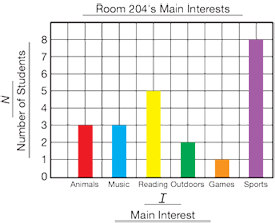Students use the TIMS Laboratory Method to carry out a brief study of the number of eyelets in shoes in the classroom. This lesson provides opportunities to set and assess expectations for collecting, describing, and using data.
Content in this Lesson
- Selecting, collecting, and organizing data to answer a question.
- Naming variables in an investigation and listing appropriate values for each [E1].
- Representing the variables and procedures of an investigation in a drawing [E2].
- Making a bar graph using numerical data [E4].
- Finding the mode of a data set [E6].
- Reading a table or bar graph to find information about a data set [E7].
- Modeling real-world situations with bar graphs [E8].
Assessment in this Lesson
| Assessment | Expectation Assessed | Math Practices Expectation Assessed |
|---|---|---|
|
Eyelets Lab |
|
|
|
Pockets at St. Crispin's |
|
|















